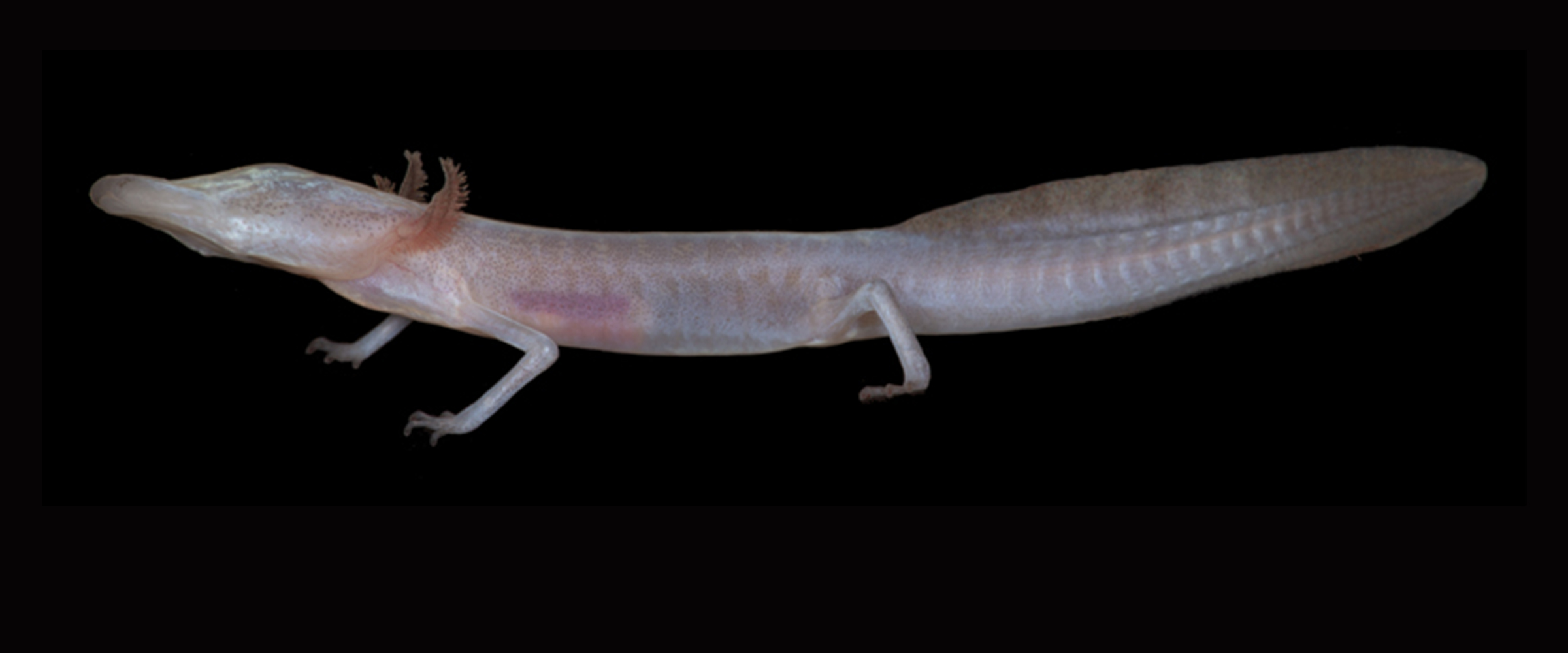
When we think about biodiversity, we often imagine life on ground, in the sea and air. Rarely do we think about biodiversity being in places we can’t see.
Beneath our feet, there are water sources with vast amounts of life, species being discovered, and species still yet to be discovered. It’s a diverse fascinating world that would inspire any science fiction novelist. Unfortunately, because of increases in groundwater depletion and the sensitivity of this environment to climate change, this delicate unseen world is threatened.
Tom Devitt, Research Scientist in the Department of Integrative Biology, studies many things, including amazing places like these. “Subterranean groundwater ecosystems are home to unique biological communities of remarkable biodiversity,” he says, “but they remain very poorly known compared to freshwater surface habitats.”
The reason for this is simple: groundwater environments are difficult to access and observe directly. Wells may extend hundreds of feet below ground, and offer a glimpse of what lies beneath the surface. But most habitats are not accessible by a human, and those that are require an adventurous spirit that isn’t averse to cold, wet, tight, dark spaces. Devitt explains: “Some caves require long belly crawls. Others involve vertical rope work. Limitations like these are major obstacles to advancing knowledge on groundwater biodiversity. And that makes implementation of protection and management strategies difficult.”

A small example of groundwater species. (Gilbert & Culver, 2009, Freshwater Biology)
The creatures that live in these environments are called stygobionts. The photo above is just an example of some non-local species of isopods, insects, mollusks, and crustaceans. The environments also include fungi, protists, viruses, and bacteria, as well as fish and amphibians like salamanders, of which there is great diversity.
It may be easy to assume that such a sequestered ecosystem may be safe from climate change, but Devitt explains that is not the case. “The negative impacts manifest in more subtle ways than in surface environments because they may be invisible and delayed,” Devitt explains. “The subterranean world is especially sensitive to human impacts.”
Like with so many other species, human activity has affected a precious resource close to home: the Edwards Aquifer. Some of the endangered species of this aquifer include the Fountain Darter, (Etheostoma fonticola), San Marco Gambusia (Gambusia georgei; now thought to be extinct), Texas Wild Rice (Zizania texana), and Peck’s Cave Amphipod (Stygobromus pecki). Many salamanders also are endangered and threatened, species like the Texas Blind Salamander (Eurycea rathbuni) and Austin Blind Salamander (Eurycea waterlooensis). “The destruction, modification, or curtailment of their habitat has threatened these species,” Devitt says, “as well as inadequacy of existing regulatory mechanisms for protecting water quality and quantity.”

Texas Blind Salamander (Eurycea rathbuni) Photo: Tom Devitt
Salamanders are so-called “bioindicators”: organisms that indicate the health of the ecosystem in which they live. Their monitoring can reveal the changing quality of that environment. Devitt explains one example: “The density of the Jollyville Plateau salamanders has been shown to be negatively correlated with urbanization.”
As is the case globally, Texas’ groundwater is disappearing. The reasons include increasing human populations with greater water demand, as well as climate change bringing hotter days and more droughts, which also increases water use. From 1980 to 2000, groundwater pumping for municipal, rural domestic, and industrial use in the northern segment of the Edwards Aquifer nearly doubled. Under average recharge conditions, the Hill Country’s Trinity Aquifer is predicted to decline by three meters by 2050. But under drought of record (DOR) conditions, such as those that occurred in the 1950’s, water levels at 12 of 19 springs are projected to decline by more than 15 meters. “The depletion of groundwater affects biodiversity through habitat loss, population extinction, and declines in abundance,” Devitt says. “These extirpations may then reverberate through ecosystems via species interactions.”
Beyond just conserving unique species, care of our groundwater resources also benefits us. Groundwater is the largest source of liquid freshwater on earth, comprising more than 95%. It is essential to global food and water security, providing about half of the world’s water supply. In Texas, 60% of water used in the state is groundwater. Aquifers also serve as a water purification system.
Efforts are underway to address these concerns. The Texas Water Development Board provides resources for the average homeowner as well as those working in agriculture. They also have a detailed webpage on the subject of this blog, groundwater. Simple things that individuals can implement can make a real difference, such as using more modern and efficient home appliances, rainwater collection, and planting native, drought-tolerant plants. Taking these steps can help conserve our most precious resource, while protecting the species that live here.
RELATED ARTICLES: |

An example of challenging research, grad student Ruben Tovar in the field.



